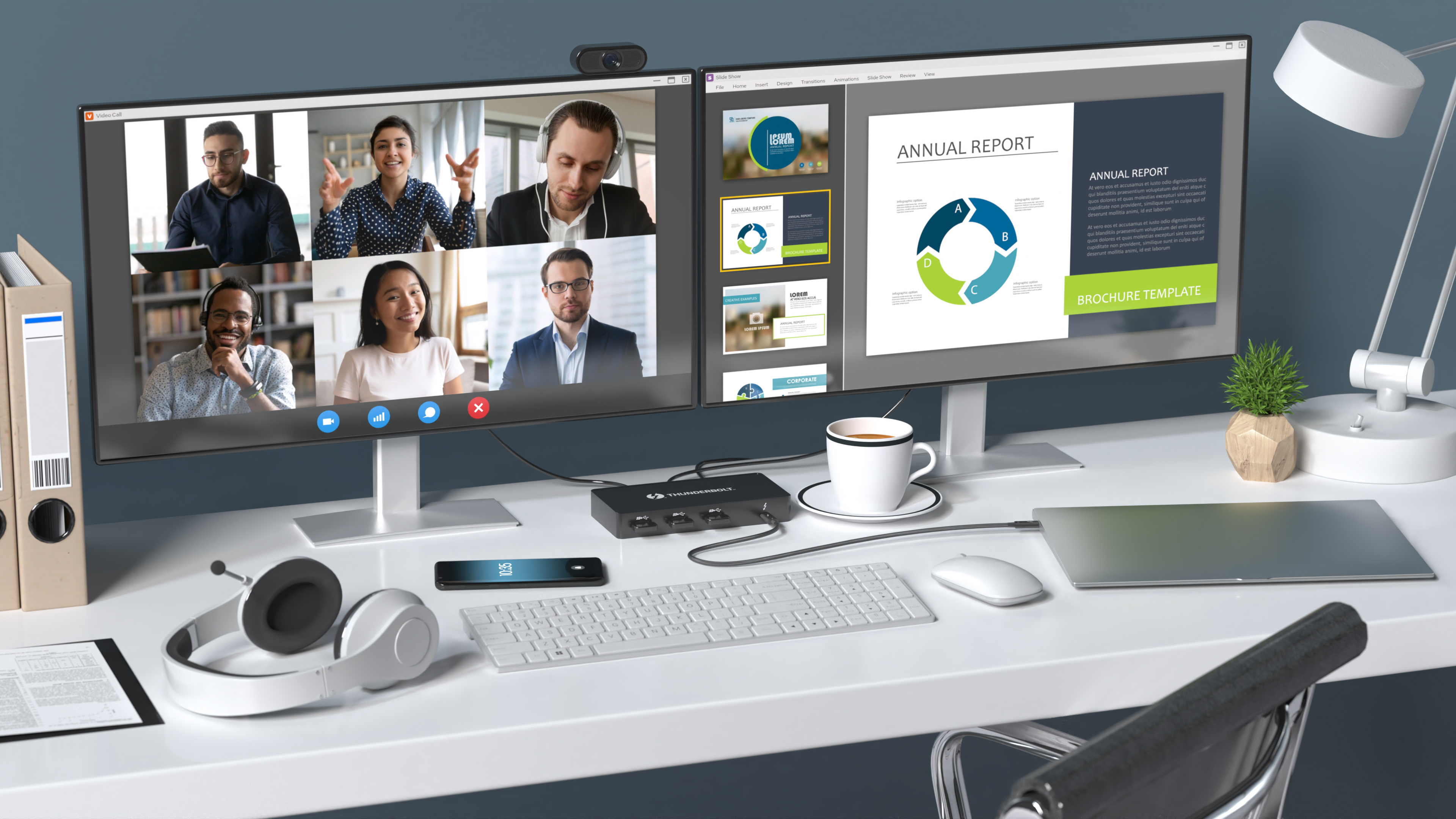Get ready for a whole new generation of USB.
First announced in 2019, "USB4” (official spelling lacks a space, but we’re using one in this article to reflect the way readers search) is finally appearing in some shipping computers, including Apple's new M1-powered iMacs, its M1-based Macbooks and Mac Mini and laptops with Intel 11th Gen Tiger Lake laptops. You won't find a ton of devices marketed as USB 4 at the moment, but a new generation of USB 4-powered docks and peripherals is trickling in.
USB 4 promises a host of benefits that include faster transfer speeds, better management of video bandwidth and optional compatibility with Thunderbolt 3.
Main Benefits of USB 4
The new USB 4 standard has three main benefits over prior versions of USB.
40 Gbps Maximum Speed: By using two-lane cables, devices are able to operate at up to 40 Gbps, the same speed as Thunderbolt 3. The data is transmitted in two sets of four bidirectional lanes.
DisplayPort Alt Mode 2.0: USB 4 supports DisplayPort 2.0 over its alternative mode. DisplayPort 2.0 can support 8K resolution at 60 Hz with HDR10 color. DisplayPort 2.0 can use up to 80 Gbps, which is double the amount available to USB data, because it sends all the data in one direction (to the monitor) and can thus use all eight data lanes at once.
Compatible with Thunderbolt 3 devices: Some, but not necessarily all USB 4 implementations will also work with Thunderbolt 3 devices.
Better Resource Allocation for Video, PCIe: In lieu of alternative mode where the other interface takes over the connection, USB 4 devices can use a process called "protocol tunneling" that sends DisplayPort, PCIe and USB packets at the same time while allocating bandwidth accordingly.
So, if the video only needs 20 percent of the bandwidth to drive your 1080p monitor that’s also a hub, the other 80 percent will be free for transferring files from your external SSD which can operate over either USB protocol or PCIe....
This almost goes without saying: USB 4 will only operate over the Type-C connector.


